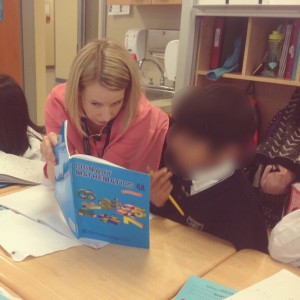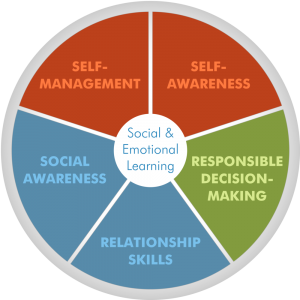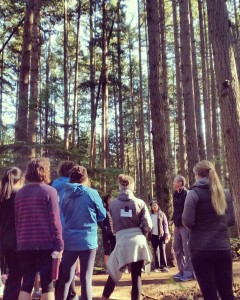A Community of Care
The first priority for me as a teacher: to facilitate a learning environment where students feel safe, supported, and important. If I could achieve one thing over the course of the school year, it would be the creation of a therapeutic student-teacher relationship. Greeting each student at the door every morning; having a journal/file on their strengths, weaknesses, and interests; having regular learning ‘check-ins’; getting involved in extra-curriculars…. These are just some of the ways in which I hope to facilitate a collaborative learning environment. The bottom line is that students don’t learn from those they don’t like. And while liking me in not the essential component, my hope is that my students will feel that they can approach me with any concern, and that there is a two-way respectful relationship where open and meaningful feedback supports my students to gain confidence in their learning and as themselves as a person.
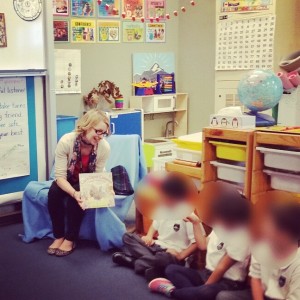 I want my classroom to become a community of caring, respectful and open-minded individuals who can value multiple perspectives and support each other on their learning journey. At the heart of this is teamwork and collaboration, aspects that are very important to me as a teacher working among motivated and inspiring colleagues. At the start of every year, I will spend the majority of time on fun community-building activities that will allow students to really get to know each other, learn how to work with each other, and outline the classroom rules. This may seem time consuming, but I believe that the work we put in at the start will result in increased outcomes throughout the year. We will approach the curriculum through a perspective lens allowing students to engage in discussion and debate as they develop their international-mindedness. Having a sense of belonging and sense of purpose is essential for us to achieve our learning outcomes as a group.
I want my classroom to become a community of caring, respectful and open-minded individuals who can value multiple perspectives and support each other on their learning journey. At the heart of this is teamwork and collaboration, aspects that are very important to me as a teacher working among motivated and inspiring colleagues. At the start of every year, I will spend the majority of time on fun community-building activities that will allow students to really get to know each other, learn how to work with each other, and outline the classroom rules. This may seem time consuming, but I believe that the work we put in at the start will result in increased outcomes throughout the year. We will approach the curriculum through a perspective lens allowing students to engage in discussion and debate as they develop their international-mindedness. Having a sense of belonging and sense of purpose is essential for us to achieve our learning outcomes as a group.
Social & Emotional Learning
My own teaching philosophy is very much centered around the notion of teaching the child as a whole, as opposed to focusing simply on the academics. Life skills, self-awareness, confidence, happiness, and consideration – these are all qualities I would prefer my students to have over getting good grades (although both are great!). The inclusion of the Core Competencies in the new BC Curriculum demonstrates that we are now recognizing the importance of this in children’s education, an exciting development for education in B.C. Related to the Core Competencies and the IB Learner Profile traits, my own teacher inquiry is centered around SEL, investigating how we can create a classroom climate that helps develop lifelong resiliency skills. One of the many ways in which I hope to incorporate SEL into my classroom is to infuse my personality and humour in everyday interactions. There is an abundance of research that supports the notion that how we feel affects how and when we learn (e.g. Immordino‐Yang & Damasio, 2007). Essentially, the happier we are in the classroom, the more we learn. Students will not be engaged in their education if they are not enjoying themselves, and thus I believe the classroom should be a fun, happy place where we are all enjoying our learning together.
Active Learning Environment
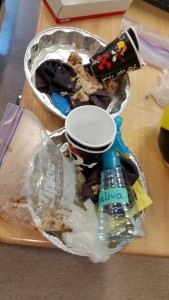 Like any 21st century teacher, I want my students to be actively engaged in their learning. In order to achieve this, it might mean that students are moving around the classroom as they get ‘hands-on’, that people walking past in the hallway may hear a loud buzz as students collaborate and discuss, or that students’ desks are messy while they are creating a new science experiment. Learning is messy! I’m comfortable with students getting excited or the classroom vibe getting a little crazy, as long as students are learning, collaborating and excited about what they are doing. My classroom will feature various areas that students can utilize while they are working individually or in groups: open collaborative spaces, moveable desks, creativity zones, quiet reflective corners… these flexible learning environments will be designed based on the needs of the group with the aim of supporting students based on their diverse learning styles.
Like any 21st century teacher, I want my students to be actively engaged in their learning. In order to achieve this, it might mean that students are moving around the classroom as they get ‘hands-on’, that people walking past in the hallway may hear a loud buzz as students collaborate and discuss, or that students’ desks are messy while they are creating a new science experiment. Learning is messy! I’m comfortable with students getting excited or the classroom vibe getting a little crazy, as long as students are learning, collaborating and excited about what they are doing. My classroom will feature various areas that students can utilize while they are working individually or in groups: open collaborative spaces, moveable desks, creativity zones, quiet reflective corners… these flexible learning environments will be designed based on the needs of the group with the aim of supporting students based on their diverse learning styles.
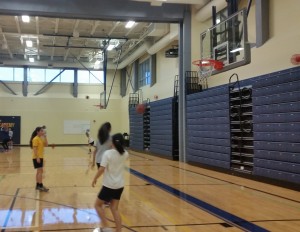 My classroom pedagogy will also have a large focus on developing physical literacy. As much as we try, I believe that the BC Ministry of Education’s requirement that children participate in 30 minutes of Daily Physical Activity is very rarely being met (how many students really run around for their full recess?). Checking off PLO’s have become such a priority over the years, that we often forget the importance of place-based learning and going outdoors on children’s mental, emotional and physical wellbeing. On top of this, having grown up in an active family and participating in sports throughout my childhood and teens, I believe that extra-curriculars have a large role to play in the social and emotional development of children. Thus I will attempt to model this by incorporating physical activity and getting outside the classroom walls into my everyday class routines, and getting involved with the extra-curricular activities within my school.
My classroom pedagogy will also have a large focus on developing physical literacy. As much as we try, I believe that the BC Ministry of Education’s requirement that children participate in 30 minutes of Daily Physical Activity is very rarely being met (how many students really run around for their full recess?). Checking off PLO’s have become such a priority over the years, that we often forget the importance of place-based learning and going outdoors on children’s mental, emotional and physical wellbeing. On top of this, having grown up in an active family and participating in sports throughout my childhood and teens, I believe that extra-curriculars have a large role to play in the social and emotional development of children. Thus I will attempt to model this by incorporating physical activity and getting outside the classroom walls into my everyday class routines, and getting involved with the extra-curricular activities within my school.

